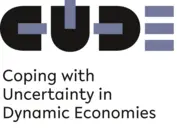Economics Terms A-Z
Creative Destruction
Read a summary or generate practice questions using the INOMICS AI tool
“Creative destruction” in economics is a phrase that describes how the economy reacts to change. When innovation introduces new technologies, the economy moves to phase out outdated or obsolete goods and services in favor of new, more efficient ones.
But this is not a smooth process; jobs are lost and industries are destroyed as new jobs and new industries are created. The concept of creative destruction is best illustrated with an example.
Creative destruction in action
Consider the market for movies. In the past, movies were viewed in the theater or purchased on VHS or on a DVD. There was an industry built around renting or buying movies in VHS and later DVD format for home viewing.
Blockbuster was a major retailer that had a big movie rental business, though they sold other goods and services as well. At its peak in 2004, the chain had over 9,000 stores and was worth more than $5.9 billion (USD). But today, Blockbuster has just one store left in the entire world (located in Bend, Oregon in the US). The store even draws tourists who remember the iconic chain and want to visit!1
So how does a massive, successful, multinational business almost entirely disappear in just a few years? Creative destruction is to blame.
Netflix was founded in 1997 and at first was in the business of sending DVDs by mail. In 2007, Netflix launched its online movie streaming service, which allowed customers to watch movies on demand without leaving the comfort of their homes. It also eliminated the need to return a DVD, which was a chore many people disliked doing. While streaming over the Internet is incredibly common today, Netflix was the first major company to succeed at offering online streaming video services.
Streaming a TV show or movie over the Internet is more convenient than renting a DVD for the vast majority of people. As such, when the technology became widespread, people flocked to online streaming services and abandoned DVD rentals. This caused companies like Blockbuster to lose money and go (almost completely) out of business. The movie rental business today is a shadow of its former self, having been replaced by online streaming.
The pros and cons of innovation
The advent of streaming resulted in an increase in overall welfare for society. It made movies more accessible for everyone and decreased the time investment required to get a new movie as well.
This might sound like a Pareto improvement, but it wasn’t. That’s because people who relied on the old movie rental industry for their livelihoods were potentially harmed more than helped by the rise of streaming.
As old, now-obsolete industries go out of business because of new, better technologies or services that are introduced, many people in the old industries lose their jobs. This period of unemployment is hard for most people since it results in a utility-reducing loss of income and a period of uncertainty when looking for a new job.
Some of these workers might not recover their original level of utility, especially if they had specialized skills that are no longer needed. Therefore, some people are made worse off even if society overall is made better off.
This is why Joseph Schumpeter named the process “creative destruction”. While new things are introduced and invented that improve society, in a capitalist system there are ultimately individuals who lose out because of this progress, too. And there is no guarantee that displaced workers will find new careers that are as fulfilling as their previous ones.
To recap, innovation successfully permeates markets and has positive overall welfare effects, but it comes at a cost. Elements of this cost are, for example, unemployment and loss of capital as mentioned above. Thus, the term “creative destruction” tries to convey both meanings. Innovation is the utility-improving fruit of creativeness, and destruction is its utility-diminishing by-product.
Creative destruction is not all bad. In fact, innovation is one of the core ingredients of the Cobb-Douglas production function. Economists agree that technological progress created by innovation is a good thing for society, as the positive effects of innovation almost always outweigh the destructive aspects. Overall, innovation and the process of creative destruction allow our economies to grow and be made better off overall.
Further Reading
The phrase “creative destruction” is attributed to Austrian economist Joseph Schumpeter, who coined the term in his 1942 book Capitalism, Socialism, and Democracy. He described capitalism as “the perennial gale of creative destruction”, referring to how the progress of innovation and economic growth causes upheaval in certain economic sectors and can create misfortune for some even as it improves society overall.
His work is worth a read; it’s considered a classic not only in economics but also in the social sciences in general.
References
1: https://www.businessinsider.com/rise-and-fall-of-blockbuster
-
- Assistant Professor / Lecturer Job
- Posted 1 week ago
Assistant Professor - Economics/Finance
At SUNY Canton in Canton, États-Unis
-
- Conférence
- (Hybrid)
- Posted 1 week ago
Call for Papers – 3rd Emerging Countries International Conference on Business, Finance and Economics
3 Dec in Maurice -
- Conférence
- Posted 1 week ago
Call for Papers: EMANES Annual Conference 2025
Between 10 Dec and 12 Dec in Barcelona, Espagne











